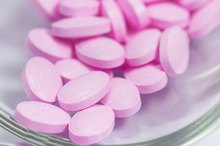What Is an SAP 10-50 Test?
A SAP (Substance Abuse Panel) test is a screening for several types of illegal drugs, using urine samples commonly administered by employers, probation officers and athletic departments. The numbers following the SAP code detail the range and requirements of the test.
Drugs Screened
The first numeral following the SAP designation refers to a list of 10 classes of illegal or restricted drugs commonly used recreationally. This list includes amphetamines, barbiturates, benzodiazepines (Valium), cocaine, cannabis, methadone, methaqualone (Quaaludes), opiates, phencyclidine (PCP), and propoxyphene (Darvon).include:
- This list includes amphetamines
- barbiturates
- benzodiazepines (Valium)
- cocaine
- cannabis
- methadone
- methaqualone (Quaaludes)
- opiates
- phencyclidine (PCP),
- propoxyphene (Darvon)
These drugs are more commonly tested for than any others, and the SAP-10 is the most common drug screening test.
Cut-off Level
What Drugs Are Tested for in a Urinalysis?
Learn More
The second numeral refers to the test's cut-off level. This is the concentration required to test positive for any one of the drugs--in this case, 50 nanograms per milliliter. Any concentration 50 ng/mL or higher is a positive result.
Detection Limits
Another important variable is not included in the test name code. An SAP test's detection limit is the minimum concentration of a drug required for detection--not necessarily for a positive result. This is not a legal factor but a technical one; concentrations below this point simply cannot be detected by the test. The detection limit varies from test to test and from drug to drug 2.
- Another important variable is not included in the test name code.
- An SAP test's detection limit is the minimum concentration of a drug required for detection--not necessarily for a positive result.
Detection Time
Testing for Toxins in the Blood
Learn More
Though the SAP-10 tests for several drugs simultaneously, the time window necessary to detect use varies among drugs. Cocaine, for instance, can usually only be detected 12 to 48 hours after use, while tetrahydrocannabinol (the active substance in marijuana) can remain detectable for up to a week for infrequent smokers and up to two months in the case of chronic use.
Other Tests
Because the SAP-10 is general, and because its detection limit is high, it is cheaply administered. Should an employee test positive for a particular drug on an SAP-10, his employer may elect to administer a second, more specific, more expensive test. This will often be a blood test. SAP-10s are also sometimes augmented with additional tests should an employer suspect the presence of a drug not covered by the original SAP-10: LSD and MDMA (Ecstasy) tests are both common additions.
- Because the SAP-10 is general, and because its detection limit is high, it is cheaply administered.
- SAP-10s are also sometimes augmented with additional tests should an employer suspect the presence of a drug not covered by the original SAP-10: LSD and MDMA (Ecstasy) tests are both common additions.
Related Articles
References
Writer Bio
Theon Weber has been a professional writer and critic since 2006, writing for the Village Voice, the Portland Mercury, and the late Blender Magazine. He was a staff writer at the Web-based Stylus Magazine from 2005 to its closure in 2007.








